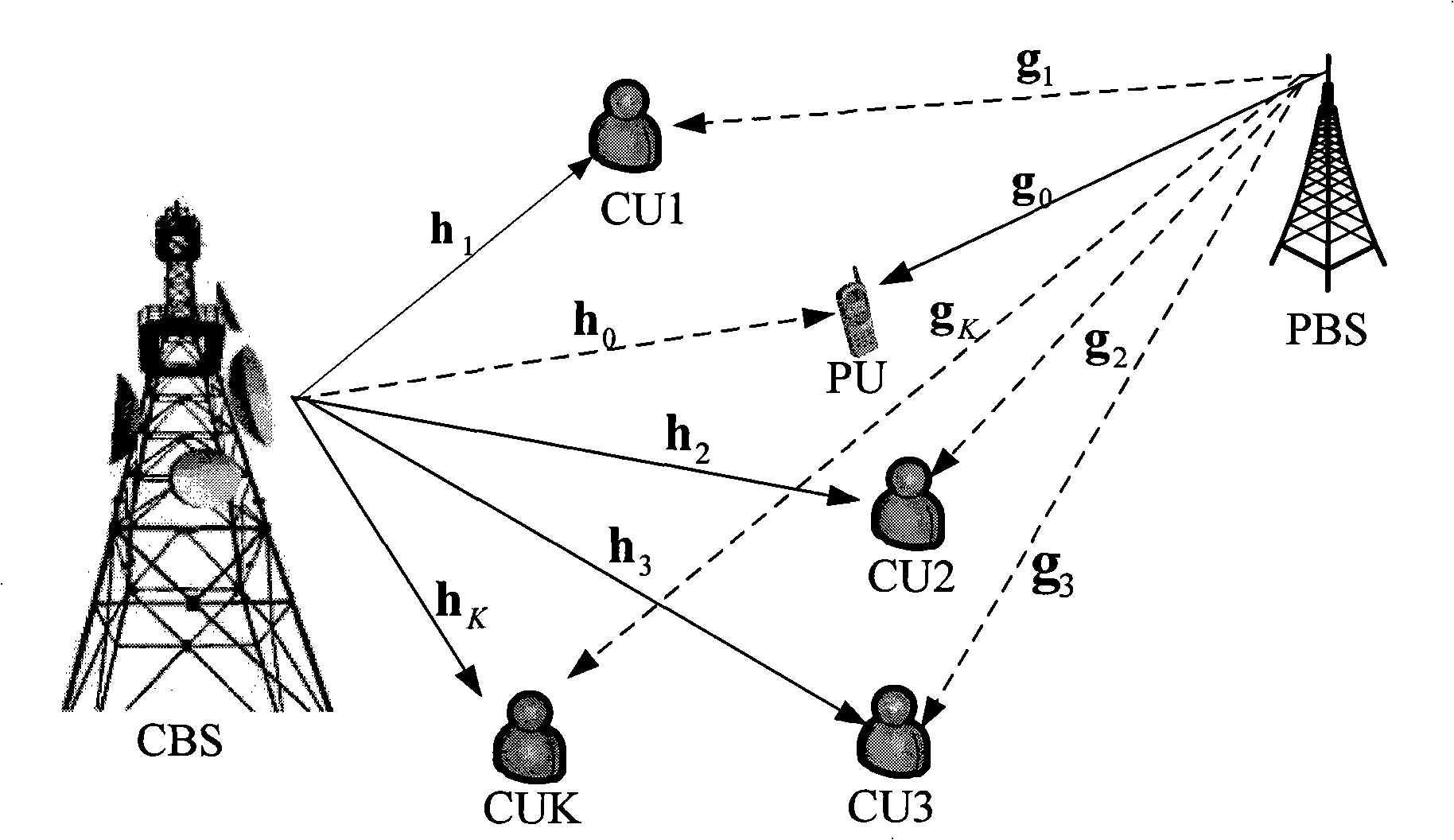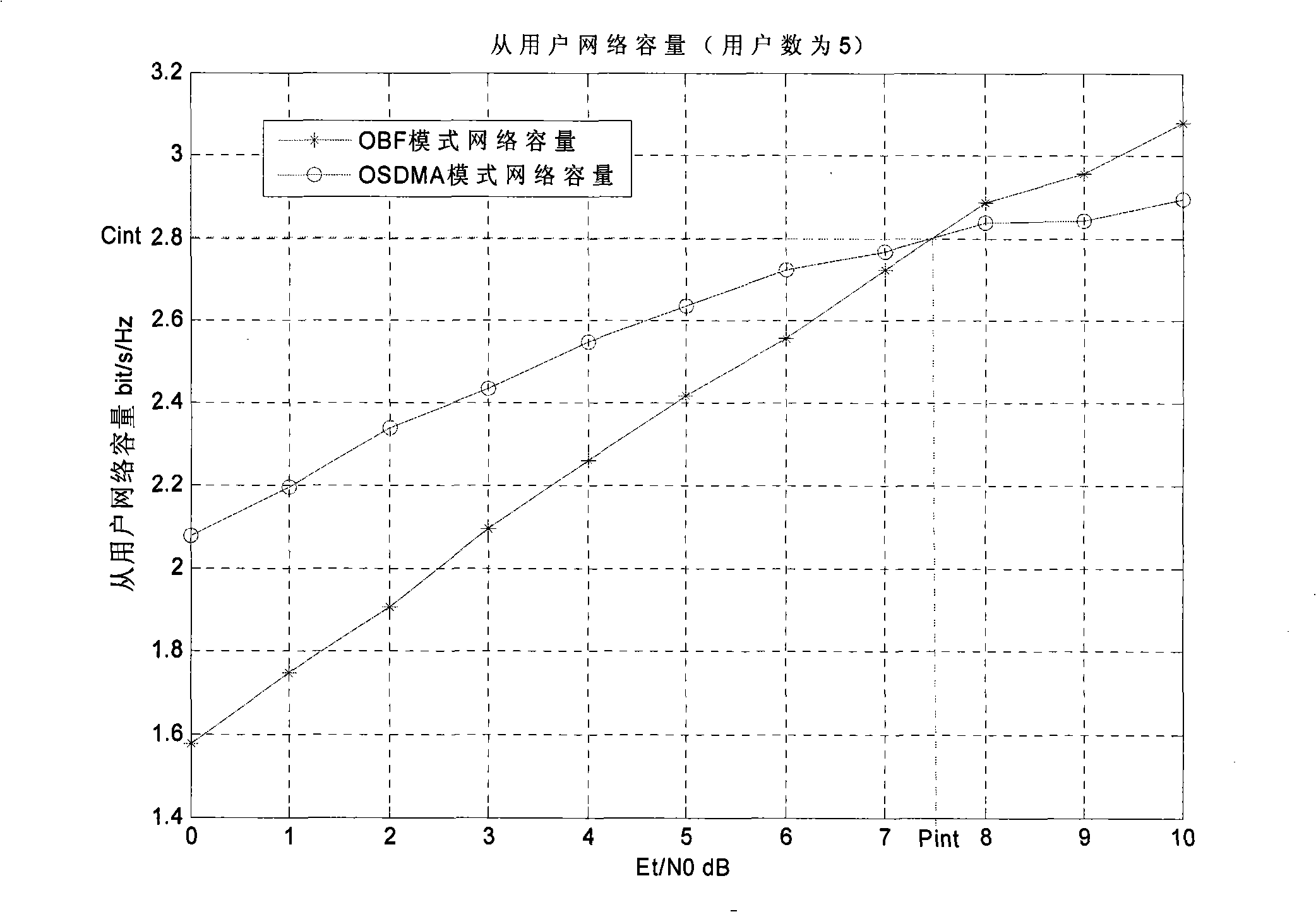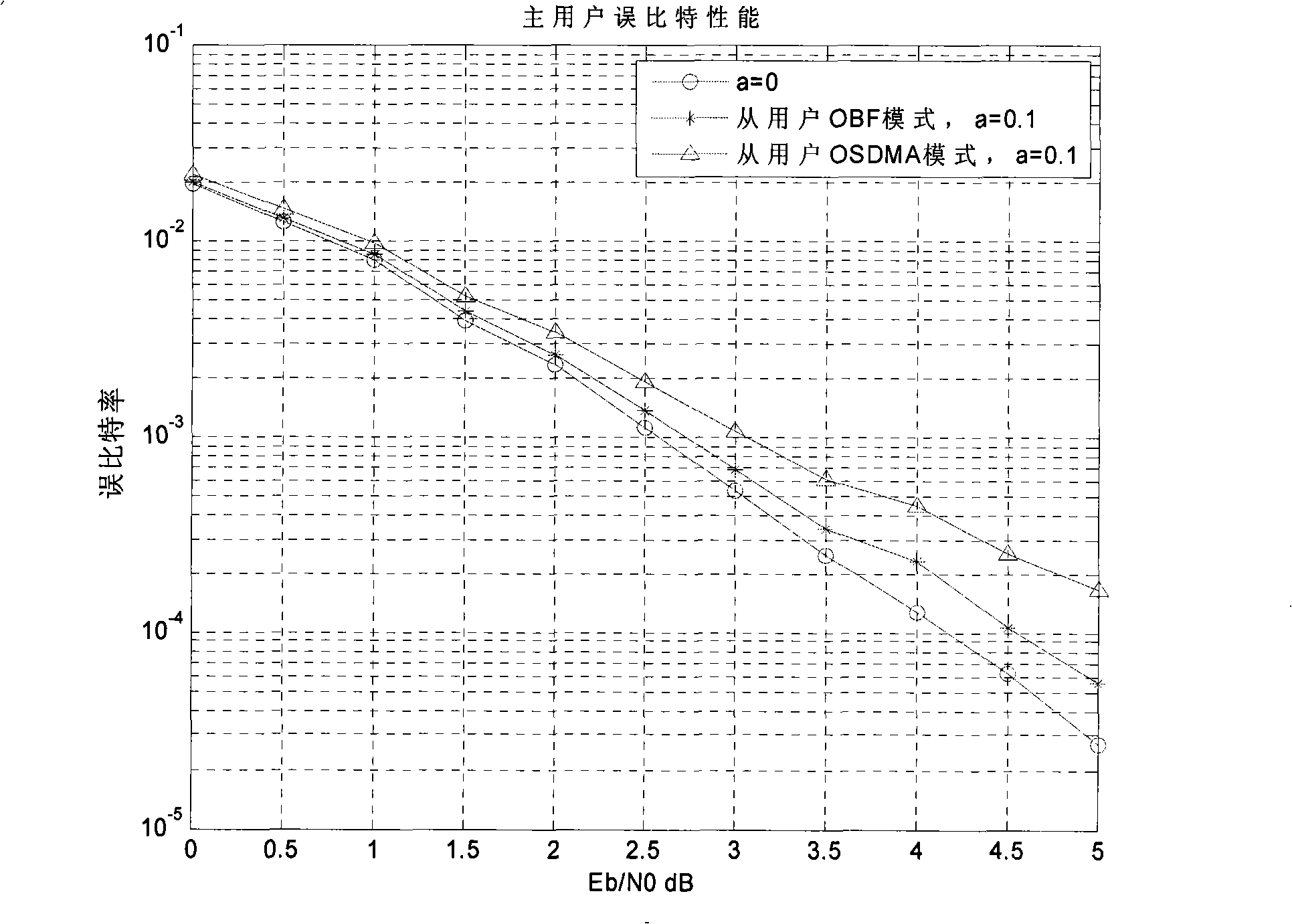Self-adapting accidental beam mode selection method of wireless cognition network
A cognitive network and mode selection technology, applied in diversity/multi-antenna systems, space transmit diversity, error prevention/detection through diversity reception, etc. Problems such as the user channel coherence is too large to achieve the effect of improving the utilization rate
- Summary
- Abstract
- Description
- Claims
- Application Information
AI Technical Summary
Problems solved by technology
Method used
Image
Examples
Embodiment Construction
[0025] The adaptive random beam mode selection method in the wireless cognitive network includes the following steps:
[0026] 1) have N t The cognitive network base station of the root transmitting antenna perceives the channel state information h of the primary user sen ;
[0027] 2) The cognitive network base station uses the transmit signal-to-noise ratio corresponding to the intersection point of the system curve of the opportunistic beamforming mode and the opportunistic space-division multiple access mode as the threshold value, and adaptively selects the transmission mode from the user network. When the transmit signal-to-noise ratio When the ratio is greater than this threshold, the capacity of opportunistic beamforming is greater than that of opportunistic space-division multiple access, and the base station selects the mode of opportunistic beamforming; otherwise, it selects the mode of opportunistic space-division multiple access;
[0028] Such as figure 1 As sh...
PUM
 Login to View More
Login to View More Abstract
Description
Claims
Application Information
 Login to View More
Login to View More - R&D
- Intellectual Property
- Life Sciences
- Materials
- Tech Scout
- Unparalleled Data Quality
- Higher Quality Content
- 60% Fewer Hallucinations
Browse by: Latest US Patents, China's latest patents, Technical Efficacy Thesaurus, Application Domain, Technology Topic, Popular Technical Reports.
© 2025 PatSnap. All rights reserved.Legal|Privacy policy|Modern Slavery Act Transparency Statement|Sitemap|About US| Contact US: help@patsnap.com



